Philharmonic Audio "The True Mini Monitor" Loudspeaker
A Blockbuster Bargain, But with a Biblical Vibe!!!
First, I have a funny story to tell about mini-monitor loudspeakers. And, as my friend Peter McGrath of Wilson Audio Specialties would say, this particular story has the “additional benefit” of actually being the truth.
An Audio-Industry Friend “gave a go” to importing a line of Studio-Monitor loudspeakers from France. Those monitor loudspeakers were voiced by ear, and also had the goal of minimizing the total number of crossover components. The thought being, that with fewer crossover parts, there would be more money to spend on each individual part. Such as big, fat, juicy, fancy capacitors. The capacitors of your dreams. Or, at least, my dreams.
That French company’s top-of-the-line offering was their “Professional Monitor.” It was a very impressive loudspeaker-—Sam Tellig (the pseudonym for former Stereophile audio writer Tom Gillet_ed.) just loved it. And what was not to like, with Dynaudio’s 6.5-inch magnesium-basket woofer and Esotec tweeter.
Furthermore, IIRC, the woofer was “running wild” (no dividing network applied), while the tweeter was tuned with a grand total of one large, expensive capacitor. The French company also made a more-affordable, smaller model, with (predictably) less-august drivers. (IIRC, the more-affordable design used Vifa drivers.)
My friend imported a batch of the Professional Monitors, and he began to sign up dealers. In due course, he ordered a batch of the (much) smaller monitors. However, a few weeks later, he received a phone call from US Customs (or, perhaps it was Homeland Security) telling him that his shipment from France had been seized, and was being impounded. (Please remember, this was not all that many years after the attacks of September 11, 2001, and so there was very heightened vigilance in effect about such things.)
So, my friend drove out to Logan Airport, and tried to find out what the big problem was. What had happened was that the shipment had been inspected. One box had been opened; revealing a pair of small-ish stereo loudspeakers.
I can’t claim that All Hell Broke Loose. But, the Forces of Social Control were positively, certainly, very annoyed. Unsmiling, even. I can easily imagine them asking each other, “Does this guy really think we are that stupid?”
What they certainly did say was some version of, “Hey Buddy! These are hi-fi loudspeakers! But the Customs Declaration says that they are ‘Baby Monitors’! We sure know what Baby Monitors are. And these are most definitely NOT Baby Monitors. So, Buddy: What’s your angle?”
(As things turned out, the French company was a lot better at designing characterful, very listenable loudspeakers, than they were at being businesslike. My friend eventually had one of those “The Night We Called It a Day” moments. Sigh.)
As a result of that priceless story, since then, I cannot ever encounter a Mini Monitor loudspeaker without mentally quipping to myself, “Awww… what a cute little Baby Monitor.”
For those of you who blew right past the Synopsis on the Home Page, the news is that my former “Loudspeaker Bargain of the Century” has been dethroned, and that a new TLBOTC is taking over. And when I say “Bargain,” I mean BARGAIN.
Philharmonic Audio’s True Mini Monitor loudspeaker, a petite 2-way ported design, is available directly from its maker in your choice of Black or Blue painted cabinets, at $380 the pair. Or, in very handsome walnut veneer, at $480 the pair.
Of course, Philharmonic Audio’s Dennis Murphy is far too much of a Sobersides, ever to name a small loudspeaker a “Baby Monitor.” So, the True Mini Monitor it is.
I did ask Dennis to explain for us in which respects the word “True” is involved. The answer was that, in the evolution of Philharmonic Audio’s product line, the previously-launched model, before the True Mini, had been named the Ceramic Mini, because of its 5-inch aluminum/ceramic dual-layer woofer.
However, doubt crept in whether the Ceramic Mini loudspeaker was a “Mini” loudspeaker, in that its cabinet’s external displacement is 1,147.5 cu.in./19 Liters/.66 cu.ft, and it weighs 17 pounds each.
So, that is how Philharmonic Audio’s small loudspeaker with a 4-inch reed-fiber woofer cone came to be dubbed the “True” Mini Monitor, as in, “This time, we really mean it.”
The True Mini’s cabinet’s external displacement is 495 cu.in/8 Liters/.29 cu.ft., and 12 pounds. So, the True Mini is less than half the size of the Ceramic Mini (but it is 2/3rds the weight). The True Mini’s dimensions are 11" x 6" 7.5" (H x W x D). I think that the True Mini’s proportions are very elegant, as is the placement of the drivers. This is what the painted ones look like:
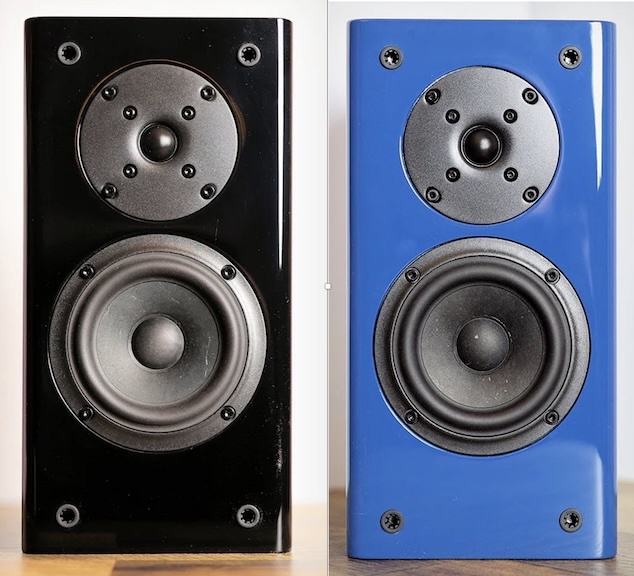
You also might be curious about my sub-headline:
A Blockbuster Bargain, But with a Biblical Vibe!!!
Blockbuster Bargain; that makes sense. But what’s this about a Biblical Vibe?
Philharmonic Audio’s website’s product page characterizes the True Mini’s woofer’s cone as a “reed” cone. OEM vendor SB Acoustics states the cone is “…made in-house… [from] proprietary cone material with natural fibers.”
So, regardless whether you choose to think of it as paper; or, as a fabric; it doth appear that the True Mini’s woofer’s cone (at least in part) is fabricated from fibers derived from a member of the plant family commonly referred to as reeds, meaning tall grass-like plants that are usually found in wetlands or nearby.
The most famous of which is the Paper Reed or Papyrus, which was the source of a common writing material in ancient Egypt and later in the ancient Near East. They would split the reed stalks lengthwise into mostly-flat strips, lay them out in parallel with a small overlap, cover the first layer with a similar second layer at right angles, pound the living doo-doo out of it all, and then leave the sheet to dry.
The Biblical connections are at least twofold. The Dead Sea Scrolls, discovered from the mid-1940s on, were mostly written on papyrus. The Dead Sea Scrolls include at least part of every book of the Old Testament (except the book of Esther).
Perhaps the most famous single (fragmentary) papyrus is the so-called Magdalen Papyrus. It is held at Magdalen (which, in the UK, is pronounced the same way as we pronounce our word “maudlin”) College, Oxford University. “Maudlin” goes back to the Middle Ages. It is a reference to Saint Mary Magdalen’s understandable tearfulness.
The Magdalen Papyrus, which has been (although, not with complete agreement) dated to circa A.D. 66, is the earliest known document (apparently from a codex, rather than a scroll) that contains parts of the Gospel of Matthew. Or of any Gospel, or any unquestionably Christian text. It could even be a first draft of Matthew.
Papyrus flourished in the dry climates around the Mediterranean. But papyrus’s life span was shorter in the wetter climates of Europe. Over time, in Europe, papyrus faded out, first to be replaced by parchment (animal skins), and then by paper made from textile pulp—rag paper. Modern papers such as newsprint, which is made from cellulose from wood pulp, date from the 1800s.
So, why would anyone go to the trouble of forming a woofer cone from reed fibers, when we already have: Conventional paper cones, plastic cones (of many varying recipes), ceramic cones, metallic cones, carbon-fiber and Kevlar cones; and now, Thin-Ply Carbon cones, both conventional and Metamodal?
I think the answers are: Reed pulp is an affordable material; and, cones fabricated with reed pulp in the mix seem to have more plusses than minuses, in terms of acoustical performance. Things such as lightness and rigidity. I also think that the sins of reed-fiber cones, if any, are more likely to be Sins of Omission rather than Sins of Commission. This FR graph comes from the woofer’s OEM vendor:
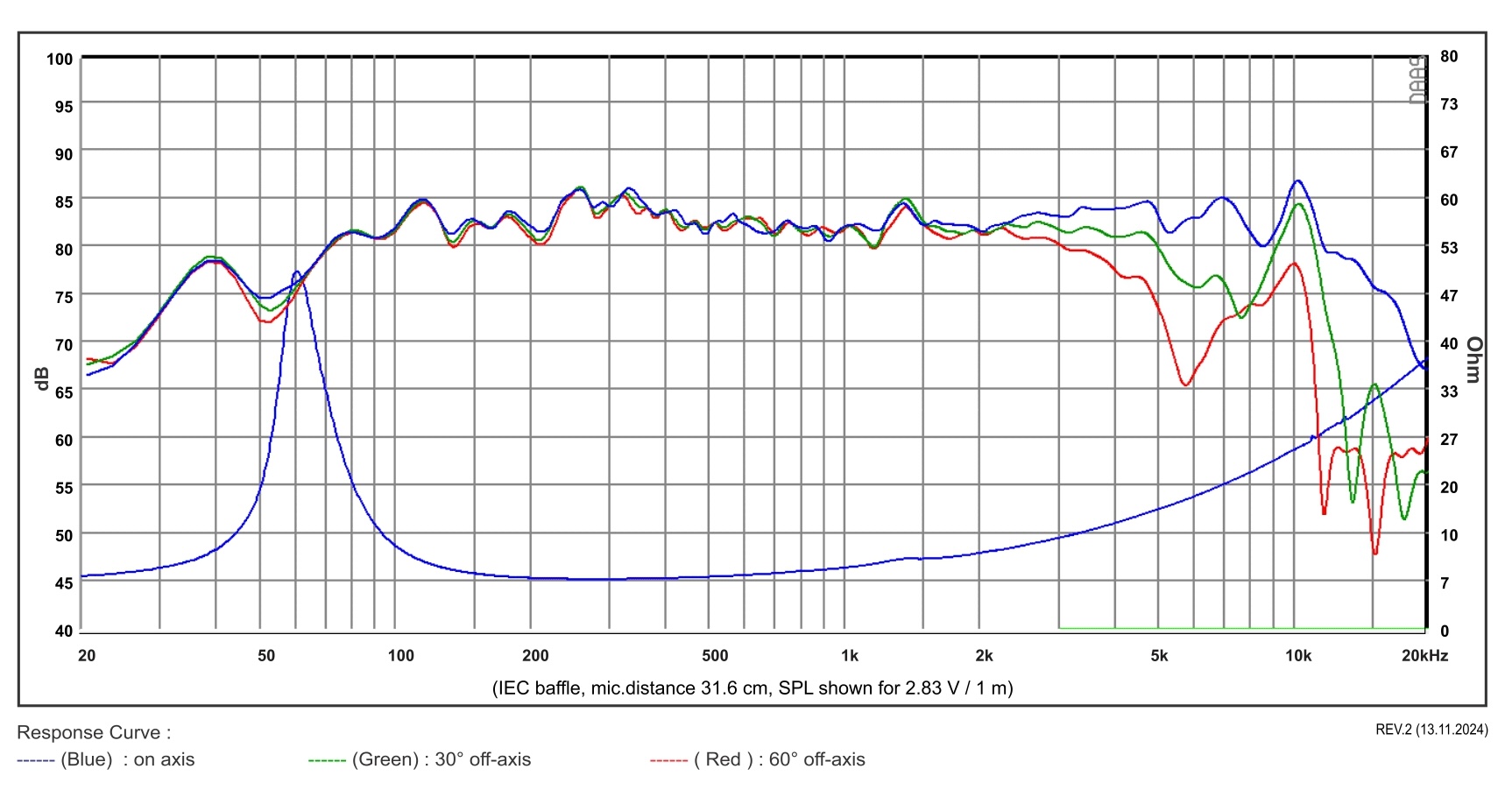
For a loudspeaker that can be had at $380 the pair, I think that looks rather impressively smooth. (Yes, I see that little hump from below Middle “C”, to above Concert “A.” But please remember that this graph is of the woofer “Running Wild,” with no crossover.)
Also, seeing as Philharmonic Audio’s website states that the True Mini’s woofer-to-tweeter crossover is Linkwitz-Riley 4th-Order Acoustic at 2,100 Hz, it seems to have been an amiable woofer to mate to, in that its on-axis behavior avoids large excursions from 2kHz all the way up through 8kHz. Therefore, the crossover doesn’t have to null out anything really big.
That suggests to me that, contrary to having problematic ringing above its intended passband, this woofer has a welcome degree of self-damping. I think that the reed fibers likely are an important part of that.
I admire the behavior of ceramic and metallic drivers… but only within their intended passbands. Many such drivers get rather ugly out-of-bandwidth, especially in the treble, and therefore, the crossover has a harder job.
If you aren’t familiar with OEM-driver vendor SB Acoustics, please scoot over to my Sasandu Tx Finale review. By the way, although SBA’s factory is in Indonesia, the actual driver design and engineering is carried out in Denmark (of all places).
As long as we are mucking around with graphs, here’s Philharmonic Audio’s on-axis FR graph for the True Mini, which to my naked eye appears to be commendably more smooth than the raw woofer’s plot. Philharmonic Audio’s product page mentions that each True Mini’s crossover has 13 elements (capacitors, coils, and resistors). I think that that is (again) a bargain for a loudspeaker that can be had for $380 the pair.
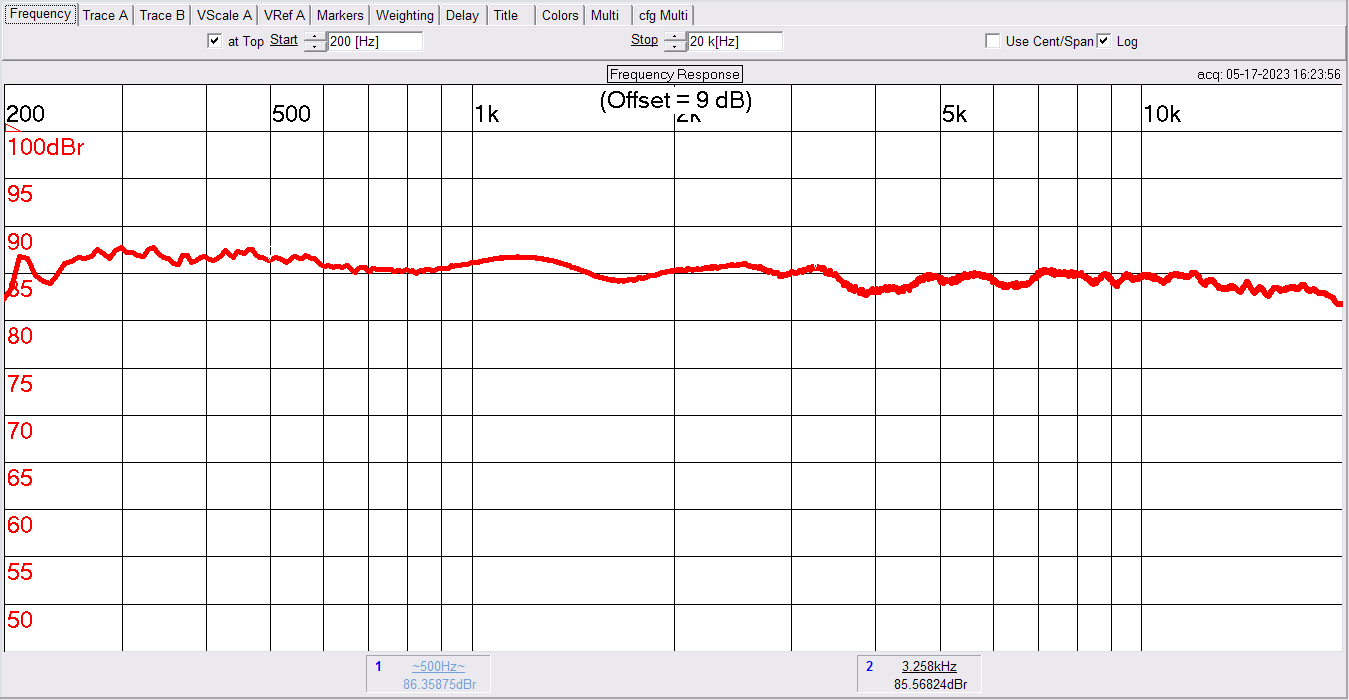
If you focus on the 2kHz point, which is very close to the crossover frequency, it appears that, below 2kHz, the response is ever-so-slightly up in volume; but above 2kHz, it is ever-so-slightly down.
If any of you can recall QUAD’s preamplifier of the 1980s, with its clever “Tilt” control knob, this response graph seems to show a very small Tilt towards a smoother and warmer sound. The emphasis is on “very small.” By the way, even though that graph ends at 20kHz, Philharmonic Audio claims that the True Mini Monitor’s 3/4" textile dome tweeter is flat to 30kHz. (My guess is that that spec is for the tweeter “fresh out of the box,” and not with a crossover.)
(Note, Philharmonic Audio’s FR graph for the recently-deposed—but not exiled—TLBOTC, the BMR Monitor, looks almost as flat as a ruler, with no tilt. No surprise, my comparative listening sessions bore that out. I also should note that John Atkinson’s measurement of the BMR Monitor is not ruler-flat. But that is because Philharmonic Audio’s graph extends down only to 200Hz, while JA’s goes down to 10Hz.)
Interestingly, Philharmonic Audio ships out the True Mini Monitor equipped with a removeable bracket (attached to the rear panel, as shown up top) for hanging the True Mini on a wall, if you so desire. Obviously, before you do that, you have to stuff the port tubes with old gym socks, or something. (It goes without saying that Philharmonic Audio’s shipment-packing job is world-class.)
About: Gym Socks, and Such Stuff: My favorite such stuff is Carded Long-Hair Mongolian Sheepswool. You buy it on amazon.com. Yes, I actually have (non-blindly, of course) compared the Organic sheepswool stuffing, to the Synthetic.
My Test Mule was an a/d/s L300 C micro-mini 2-way. I think the Organic stuff is the stuff to get—the sonic improvement was indisputable. Note: The a/d/s L300 C is a sealed-box design, so I replaced its box-stuffing material. I am not claiming that different materials would sound all that differently, when they are being used to blank off a port tube.
In any event, anticipating that many of their customers might chose the sealed rather than the ported option, Philharmonic Audio helpfully provides this information:
Ported: 70 Hz - 20kHz (+1.5 / - 3db) Anechoic
Sealed: 90 Hz - 20 kHz (+1.5/ -3dB) Anechoic
The Stuffed option is -3dB near Piano Key 42 (F# = 92.49Hz), while the Ported option is -3dB at Piano Key 37 (C# = 69.29Hz). In other words, that is C# – D – D# – E – F – F#. So, the Ported option goes five half-steps lower—call it half an octave.
But! Please note well, there is more to Das Ding an sich than just those two data points.
Ported enclosures are stronger in the bass—until they are not. Sealed enclosures begin rolling off in the bass from higher frequencies than ported enclosures do. But once they begin rolling off, sealed enclosures roll off half as fast in the bass. And sealed boxes couple to the air in the room in a more predictable manner. You hereby have my permission to Pick Your Poison. (If you can hear the difference.)
Being the total nerd I am, I subjected the True Mini Monitors to 12 hours of Augmented Pink Noise, and then 4 hours of the Ayre/Cardas Glide Tone sine-wave-sweep burn-in track. With no port modifications. I then did a quick listen and test, and then stuffed the ports, first with my favorite Cocktail Stirrer Straws, also available from Amazon.
Listening
My first evaluation tracks were the usuals: John Atkinson’s electric-bass Channel ID and Phasing Tracks, and Ella Fitzgerald’s “Easy to Love,” from The Cole Porter Song Book. Nothing to complain about at all. JA’s electric bass was surprisingly powerful. Ella’s voice was clear and true. The little moment when she turns off-mic (“Umm-huh”) was convincingly rendered.
If you call up my Qobuz “Falcon F50 Demo Tracks” playlist, I used many of those tracks while getting used to the True Mini Monitor. One track that I can particularly recommend is Christy Moore’s “So Do I,” which is Peter McGrath’s favorite diagnostic track to use, while locating loudspeakers in a listening room. In my opinion, that is somewhat paradoxical, in that it is not all that astonishingly great a recording, as a recording. IMHO.
Rather, between the rather close-miked acoustic guitar, and Moore’s singer-songwriter-style vocals, the program content (for reasons unknown), seems to reveal oodles about the all-important midrange. This track also has a way of exciting the room modes, those modes that you want to get rid of by your meticulous positioning of your loudspeakers. On the True Minis, this track was very vivid and present, and not at all lacking in resolution and detail. So, please do not read too much into my comment above about a very slight “Tilt.”
The same held true for the opening track of the totally adorable Jane Monheit’s Taking a Chance on Love, which is Fats Waller’s “Honeysuckle Rose.” And which bassist Christian McBride almost steals away from Jane. The True Mini’s bass impact was simply remarkable—for the price. They certainly did not sound like a $380/pair (or $480/pair) loudspeaker.
But of course, without question, the True Mini’s stablemate, the BMR Monitor, with its 6-inch ceramic woofer, much larger cabinet, and much larger port, provided a degree of palpable “Slam” on “Honeysuckle Rose” that the True Mini simply could not come up with.
The BMR Monitor’s woofer’s frontal area is 226% greater than the True Mini’s woofer. The specs tell the tale: A -3dB point of 70Hz, versus a -2dB point of 36Hz. The larger loudspeaker goes down a full octave lower.
That said, listening to “Honeysuckle Rose” on the True Mini Monitor, and zeroing in on the bass-and-drums instrumental break that starts at 1 minute 37 seconds, I became aware that, underneath the drum and cymbal hits, there also was what I call the “wishy-washy-washing” sound of a wire-brush drum stick’s brush-head being rubbed in circles in contact with a snare drum’s top drumhead.
That had never been made so clear to me before—any previous awareness had been only subliminal. I used Amadeus Pro II’s Spectrum function to make a Spectrum of that instrumental break. As Star Trek’s OTS Science Officer Spock would say: Fascinating.
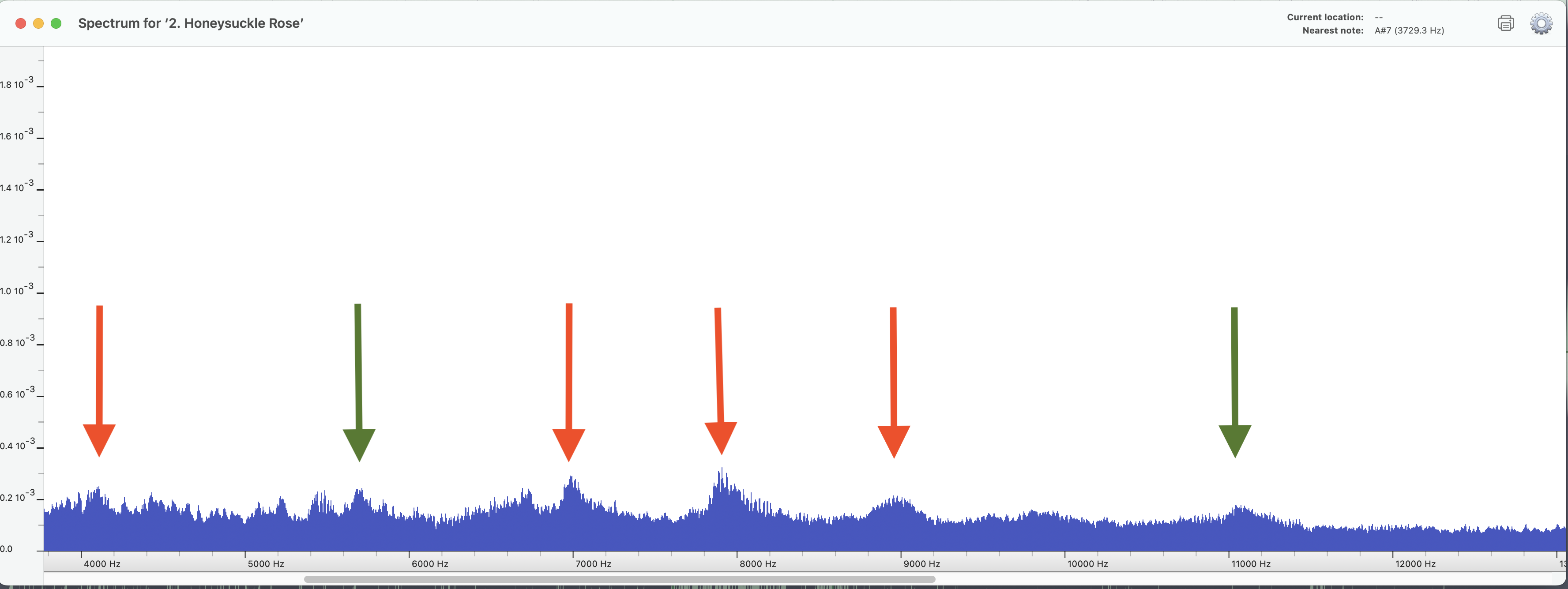
From near 3,000Hz, up through 11,000Hz, the plot showed, at somewhat regular intervals (such as, near 3,000; 4,000; 5,500; 7,000, 8,000, 9,000, and 11,000Hz) little peaks that might represent the inharmonic contributions of the wire brush.
So, again, very impressive resolving power from a little loudspeaker which costs about the “I can’t blink an eyelash over it” price of a decent pair of single-ended RCA interconnect cables.
(Preemptive Defensive Note: Of course I am aware that my being able to hear the wire-brush swishes was equal parts that the tweeters were up to the job, and that the designer’s choice of crossover EQ shape might have kicked that element up by as little as 1dB—by definition, the smallest increment of volume change most people can hear.)
Dan Fogelberg’s first album, Home Free, recorded in Nashville in 1972, I regard as an overlooked gem. I think it a high-watermark in the “Sensitive Male” (or, perhaps that should be, “Self-Absorbed, Passive-Aggressive Male”) Singer-Songwriter genre. An amazing recording job too—back when there would be a credit for that Black Art, Synthesizer Programming.
Apart from the synths, Home Free is as analog as all get-out. (I think the used LPs are underpriced in the marketplace.) Both Fogelberg’s “Lighter-than-Air” voice and the tinkly piano benefit from the True Mini Monitor’s excellent tweeter.
Cheryl Wheeler’s career started out as a singer-songwriter in New England in the mid 1970s. In 1986, North Star Records, the folks who first put out Arturo Delmoni’s début LP Songs My Mother Taught Me, put out Cheryl’s self-titled début album. The song from Cheryl Wheeler that I always have used as demonstration and evaluation material is her plangent ballad of lost love, “Arrow.” Cheryl muses, “Still, I’d fool myself and gladly, just to feel I was in love.” I think that some of us can relate to that.
Cheryl was later signed to Capitol records. For her first Capitol release, she included her North Star “Arrow,” but with added violin obbligato, and perhaps other “sweeteners.” That is the version that is up on Qobuz. It sounded just great on the True Minis.
Of course, a good part of the credit for the wonderful sound goes to the associated gear, starting with ArgentPur Audio’s 250Wpc GaN-FET Monobloc amplifiers, which seem a relative bargain at $5,900 the pair. And, a few thousand dollars in ArgentPur pure silver/air-dielectric wires and cables. My “can’t beat it with a stick” Grace Designs m900 converted Qobuz to analog.
A Lord Chancellor of England supposedly once snapped to a verbose advocate: “Thirsty folk want beer, and not explanations.”
I therefore surmise that what everybody has really been waiting for is: “How does The True Mini Monitor compare to the Falcon F50, which now costs about $2,000 more per pair?”
Well. I cannot imagine those two loudspeakers’ ever being seriously cross-shopped. Even on Gilligan’s Island, and with only a total of two loudspeaker choices.
That said, in a small number of areas, the Falcon F50 revealed itself to be a somewhat more (but not hugely) refined and sophisticated loudspeaker than the True Mini. Let’s say that that is the judgment on “Essentialism.”
However, I think it is not just a matter of the capabilities of the different drivers to reproduce sine-wave sweeps accurately. I think that a comparison is difficult because, considering “Particularity,” the two loudspeaker seem to have differing design goals or philosophies. And then: The drivers, boxes, and crossovers do their best to realize the particular vision.
I think that the True Mini Monitor was voiced to present sound that has high resolving power and wide bandwidth; however, the presentation defaults to, if you will, the direction of being warmer and smoother.
I think that the Falcon F50 was voiced to present sound that has high resolving power and wide bandwidth; however, the presentation defaults to, if you will, the direction of being (especially in the upper midrange) a little more forward, as well as clearer and more detailed.
I do think it is possible that those traits were “Baked in the loaf,” as soon as the drivers were selected.
I Didn’t Forget

I did at least imply that I would report my findings on Port Stuffing. So, I played “Honeysuckle Rose” much louder than I usually would, with the True Mini Monitors’ ports open. OK. That’s the experimental baseline. I put my hand behind the port to feel the intensity of the venting.
I then put in the cocktail sipper-straws (as seen at the top of this article). I played the track again. The impact of the air out of the straws seemed a little harder on the palm of my hand. The bass line on “Honeysuckle Rose” seemed slightly more “Focused,” or perhaps “Articulate.”
But please be assured, this was down in the low digits, perhaps 4%, and nowhere near “Night and Day.”
I then rolled up two Rubbermaid microfiber cleaning cloths, and kind-of “screwed” (rotated) them about half-way into the True Minis’ ports. That was as far as they would go. As shown. I then played “Honeysuckle Rose” again.
Well. As soon as the Catholic Church gets around to it, I am sure that they will Canonize me as the Patron Saint of Confirmation Bias.
Oops. Gotta die first! Crap!
But, seriously. With the ports stuffed, the bass from the True Minis seemed (very surprisingly, to me) a little bit fuller, richer, and, as the Brits would say, “Plummier.” Wha?
Could it be the case that the sealed-bass alignment let the woofers dig that tiny little bit deeper, to harvest a previously-inaudible increment of the bass’s fundamentals?
Sais pas.
(The quasi-paradox of acoustical and electric string-bass instruments is that because, in order to have a moving element that was at least 25% the length of the low E = 41.2Hz’s wavelength, that would require the speaking length of the bass string to be seven feet. And, an acoustical bass at least nine feet tall. So, such bass instruments, because of their acoustically short string lengths, have a “Weak Fundamental.” And therefore, the octave harmonic is usually 6dB louder.)
But in any case, again, not “Night and Day.” But a definite preference of mine!
Bottom Line
Great desktop, bedroom, or second-home loudspeakers, as well as for music-student dorm rooms. As long as you do not care about the bass lines in Brahms's A German Requiem, they should be OK as your only system. NB, they certainly appreciate being mated to twenty-times-in-value associated equipment. So, your mileage may vary.
For What They Are: Highly Recommended
UPDATE: October 26, 2025
The prices of Philharmonic Audio's True Mini Monitor have gone up circa 10%. The painted versions have gone up from $380 to $420 the pair. The wooden-cabinet version has gone up from $480 to $520 the pair. I consider these increases to be reasonable, in the global context, so to say.
John Marks is a multidisciplinary generalist and a lifelong audio hobbyist. He was educated at Brown University and at Vanderbilt Law School. He has worked as a trial and appeals lawyer; as a music educator, recording engineer, classical-music record producer and label executive; and as a music and audio-equipment journalist. He was a columnist for The Absolute Sound, and also for Stereophile magazine. His consulting clients have included Grace Design, the University of the South (Sewanee, TN), Steinway & Sons, and the Estate of Jascha Heifetz.
Specifications
The True Mini Monitor: 11" x 6" 7.5" (H x W x D)
Circa 12 pounds each
4 Ohms nominal Impedance
Frequency Response:
Ported: 70 Hz - 20kHz (+1.5 / - 3db) Anechoic
Sealed: 90 Hz - 20 kHz (+1.5/ -3dB) Anechoic
Sensitivity 85dB (2.83v/1M)


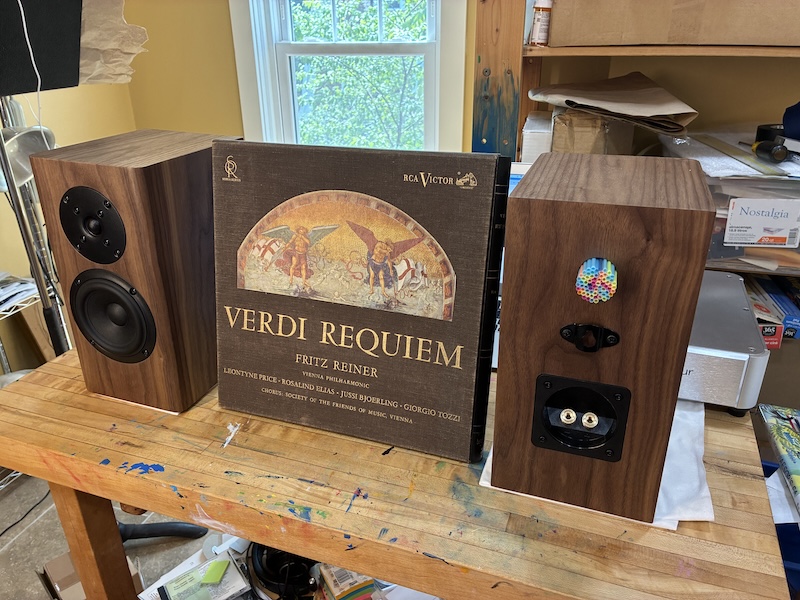

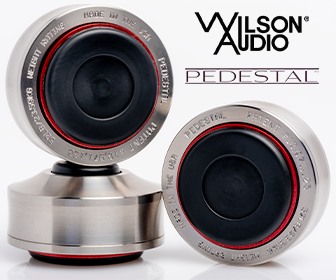
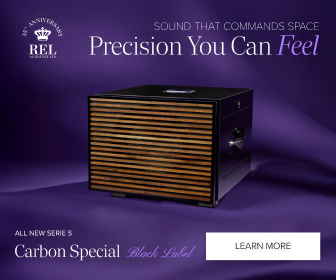
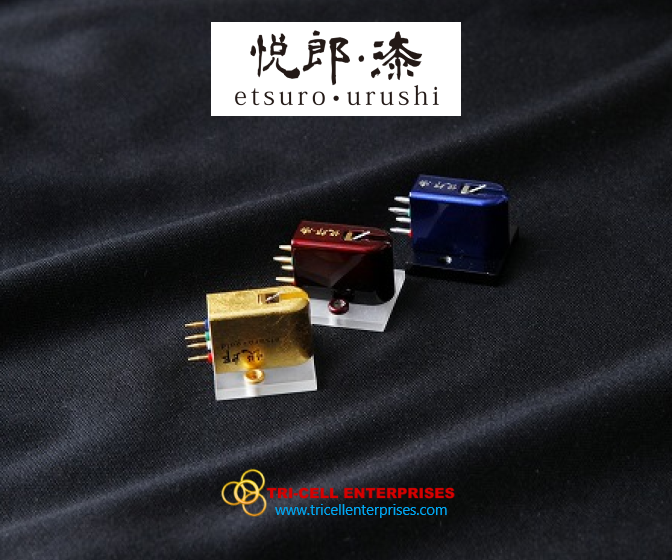

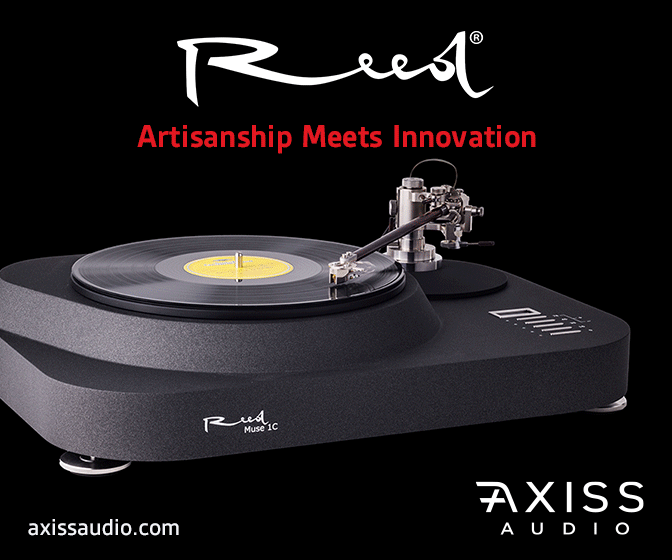
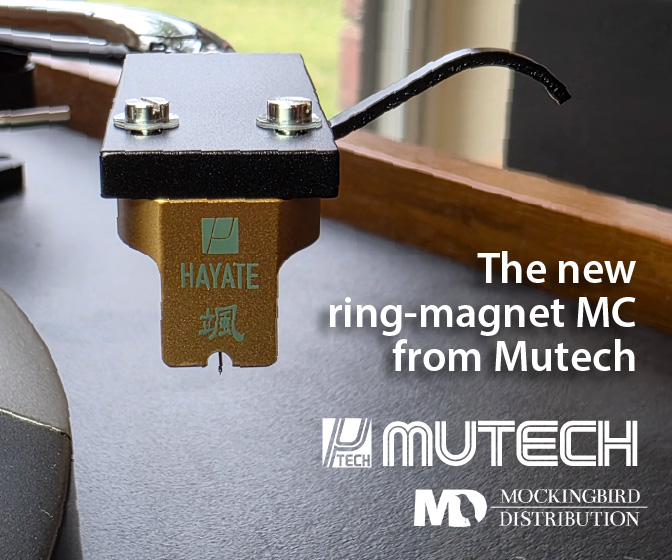
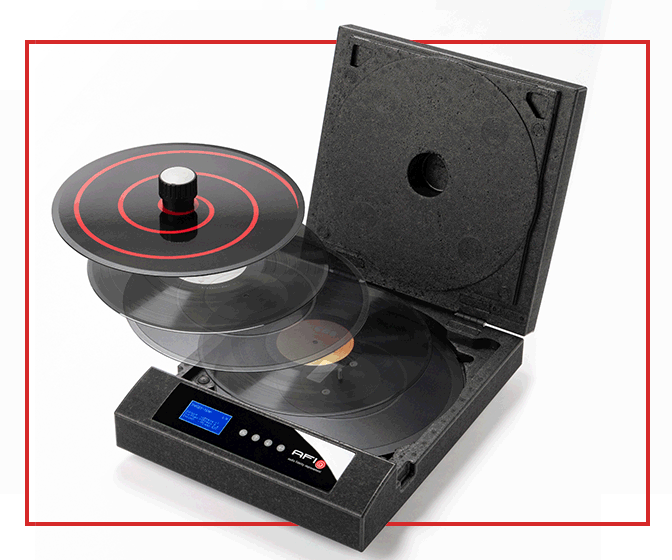

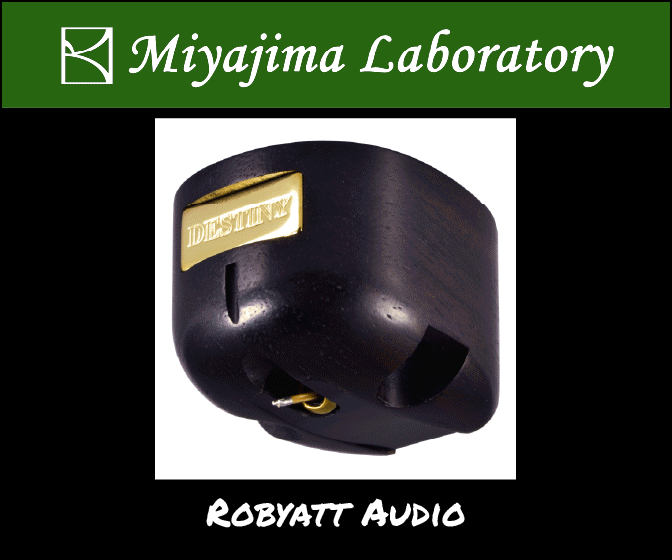





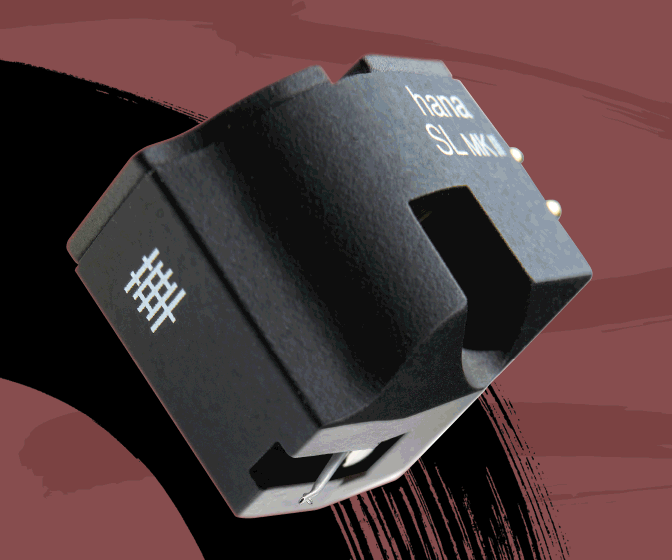

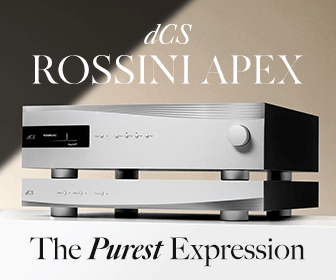
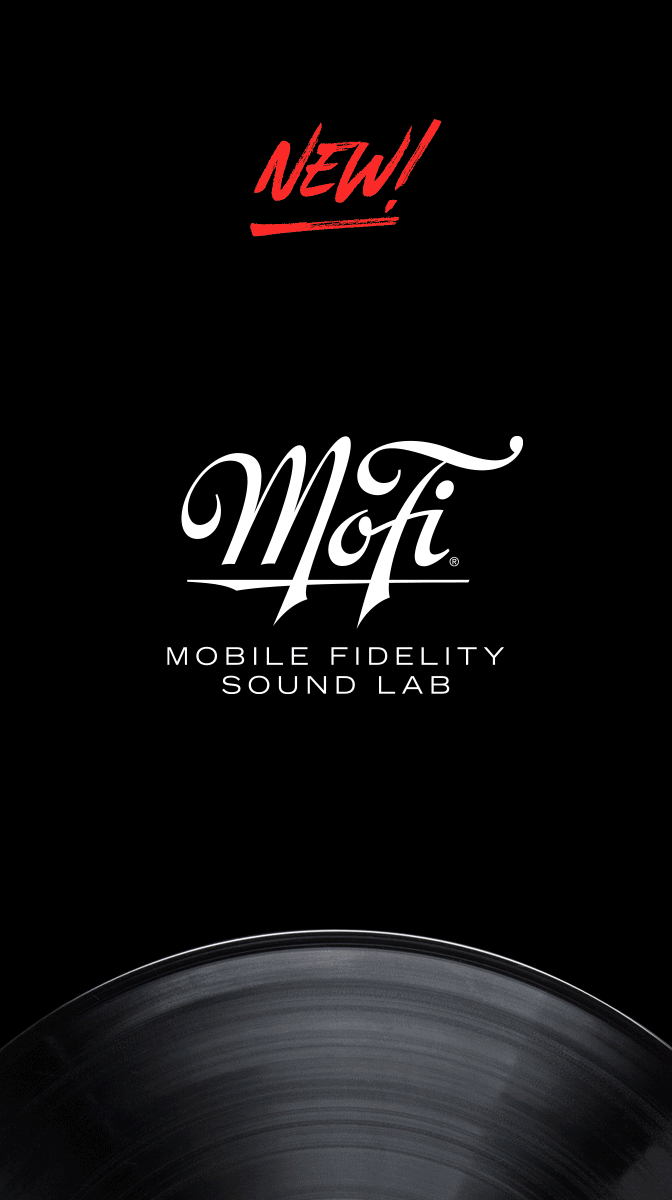

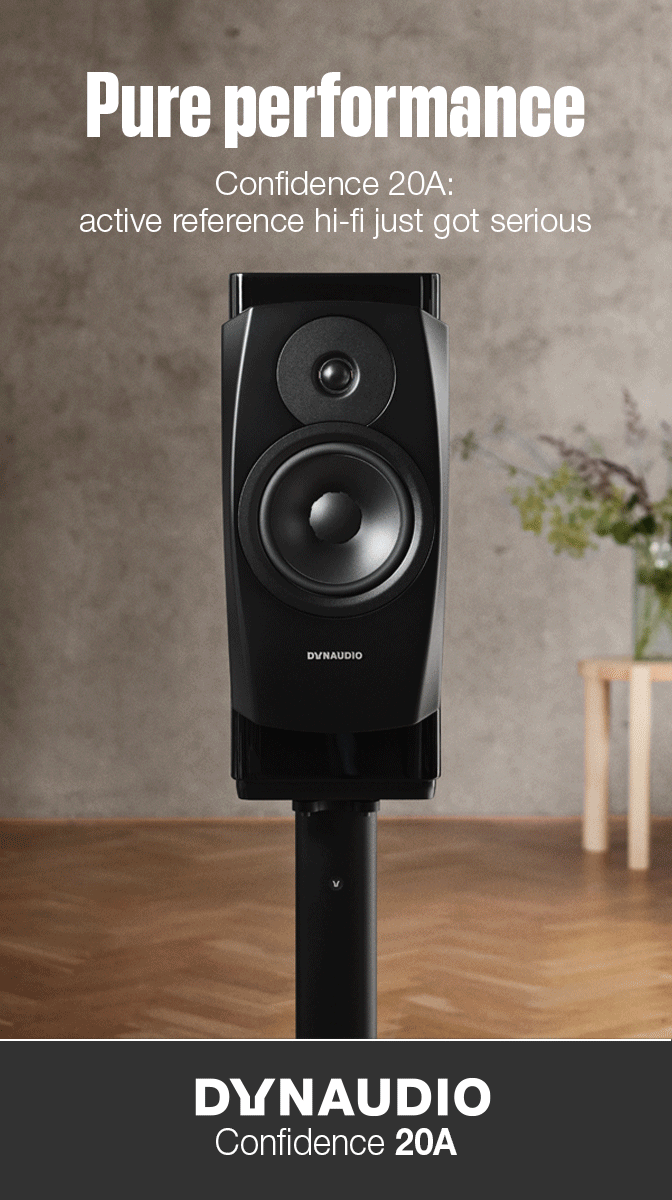
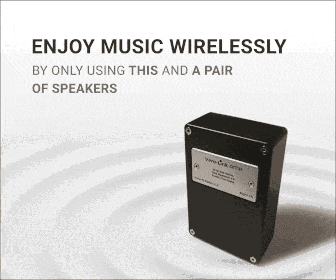
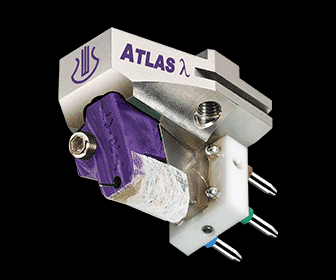

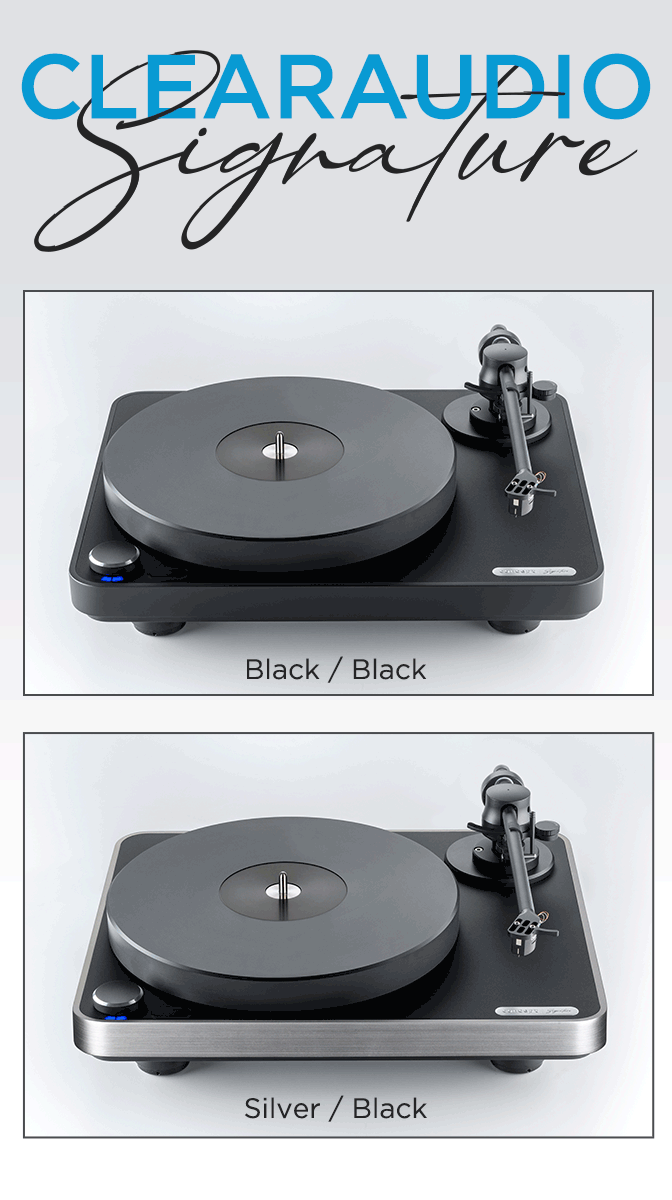


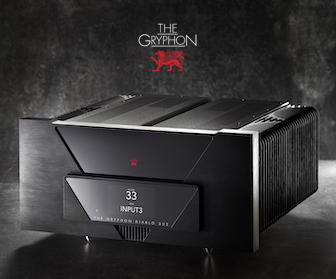
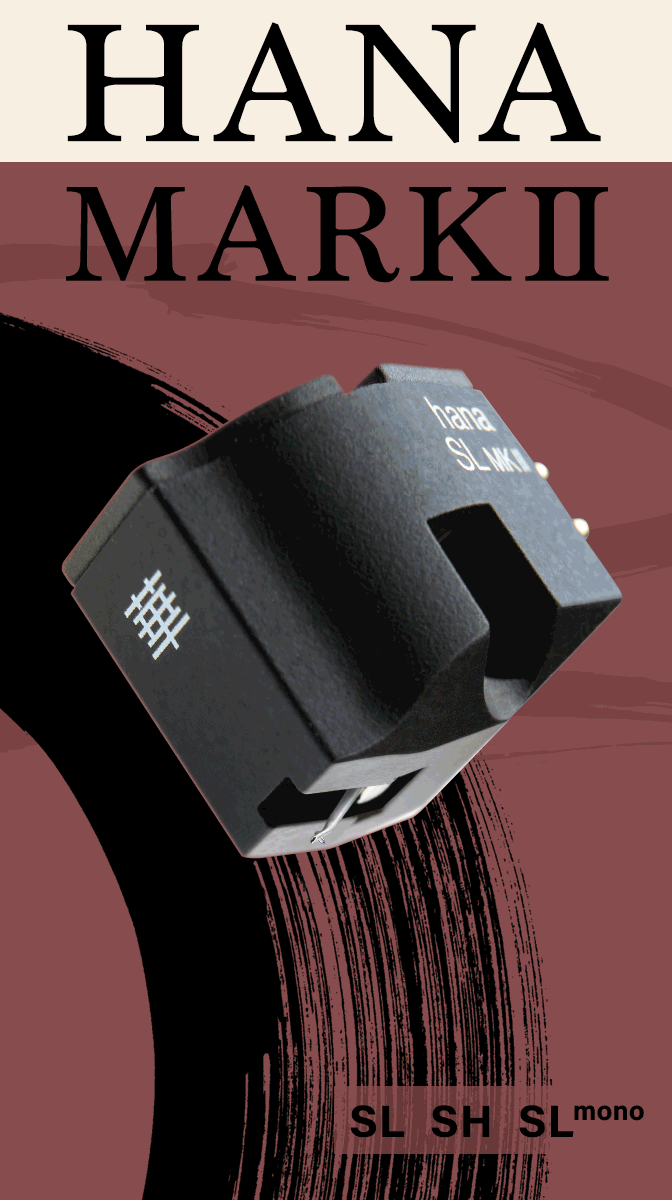


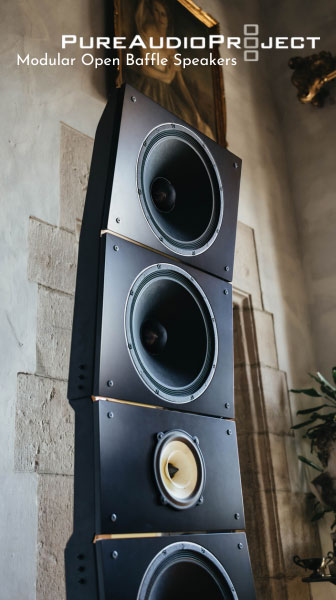
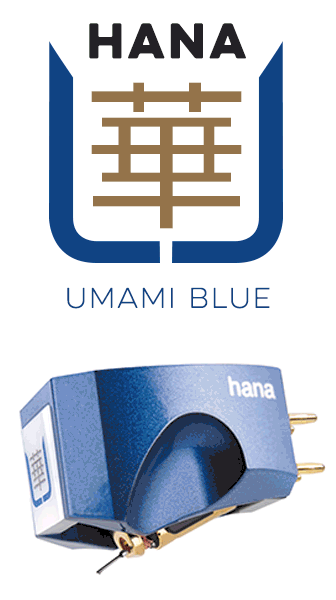





.png)








